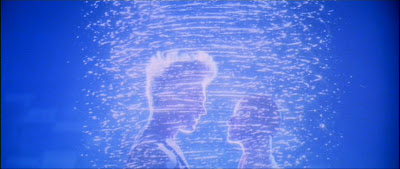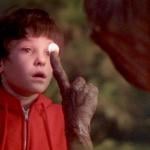The other day I came across a segment on Trailers from Hell in which Edgar Wright talks about growing up with the Disney sci-fi movie The Black Hole (1979). Like Wright, I too saw the film when it first came out in theatres, and like Wright, I too used to play with Black Hole action figures. But unlike Wright, I haven’t revisited the film at all in the past 31 years, so I was a bit surprised when he mentioned that the movie ends with the bad guy going to Hell and the good guys going to Heaven. I didn’t have any memory of that bit, and it certainly isn’t in the comic book adaptation that I own.
So I ran a quick search on YouTube to see if the ending of The Black Hole might be on there — and, sure enough, it is. (I have embedded it at the end of this post, so feel free to watch it below.) And truth be told, once I saw the footage with my own two eyes, it did begin to feel somewhat familiar. I now have a vague recollection that my nine-year-old self might have found it all a bit strange or confusing, and that I might have tried to figure it out with my dad on the drive home from the theatre.
But one thing that struck me on seeing the footage again just now was how it kind of, sort of, has something in common with the climax to Star Trek: The Motion Picture (1979), which came out in theatres only two weeks before The Black Hole did. And it was the first image above, of the evil red robot leaning in towards Dr. Reinhardt — while Dr. Reinhardt grabs the robot’s arms in a sort of desperate embrace — that particularly brought the Star Trek movie to mind.
Here is the common element: Both of these films end with a man being joined to a machine for all eternity, but in one film this is portrayed as a bad thing while in the other film it is portrayed as a good thing.
In The Black Hole, Dr. Reinhardt is ultimately imprisoned within the body of the robot that had once been his servant, and the robot, in turn, is lost in a dark and fiery world that looks rather like certain medieval depictions of Hell.
In Star Trek, on the other hand, Captain Decker bonds with the space probe V’Ger partly to save planet Earth from V’Ger’s assault, but also because this will reunite him, on some level, with a former lover of his who has since been turned into a robot by V’Ger — a robot that is such a perfect replica of Decker’s lover that it even seems to have retained some of her feelings for him. (That’s Decker and the robot facing each other in the second picture above.)
And the coup de grace? When Kirk and Spock return to the Enterprise and ponder what it is that just transpired between Decker and V’Ger, Spock states: “We witnessed a birth. Possibly a next step in our evolution.”
So the two films share a certain climactic plot element, but what the two films do with this element couldn’t be more different. In one, it’s tied to a punishment straight out of an old-fashioned religious sensibility, while in the other, it’s tied to a humanist belief in progress, progress, progress!
I wonder if anybody back in 1979 noticed this parallel. Like I say, the films came out only two weeks apart, so it wouldn’t have been hard to do. And hey, V’Ger traveled through a black hole, too!
http://www.youtube.com/watch?v=BDj6XtZrxvw













